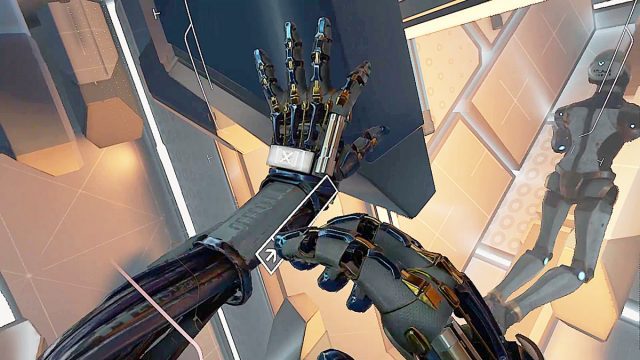Oculus had talked much about ‘Hand Presence’ with the launch of their Touch VR controllers last year, but few games have implemented the controllers in such a way that truly deliver on that promise. Combined with Touch, Lone Echo’s impressive procedural virtual hands take Hand Presence to the next level.
It’s not something you’d think is particularly important when it comes to immersion in VR, but our hands are our primary means of interacting with the world around us, and getting them ‘right’ in VR can make it that much easier to feel immersed and present inside of your virtual body.
Lone Echo (and multiplayer spinoff Echo Arena) developer Ready at Dawn has spent a considerable amount of time on the game’s virtual hands, and have achieved hands-down the most realistic looking implementation thanks to a smart procedural posing system which adapts the grip animation to each object and surface based on a physical model. We got a brief glimpse of the procedural gripping tech from the company earlier this year, and now in the recent Echo Arena open beta we’ve been able to good a closer look.
The robotic hands are not only beautifully detailed, they’re also impressively functional. You can grab any surface or object in the game, allowing you to push and pull yourself around the zero-G environment with ease. Each time you grip a surface you’ll see a unique arrangement of the fingers which lay upon the surface in an impressively convincing way.
The feeling of gripping around the corner of a surface and watching the fingers bend around it just right is surreal.
Even after you grab, the grip pose is dynamic and continues to shift based on your arm position.
When it comes to arms in VR, the rule-of-thumb is to not show the player’s arms because it’s difficult to estimate their position when only the locations of the hands and head are known in a system of many joints. If the estimation of the arm is far off from the player’s actual arm position, it can be an immersion breaker. That’s why you see so many armless avatars in VR games.
Lone Echo turns that rule-of-thumb on its head with some of the best arm inverse kinematics (IK) that we’ve seen to date. Together with the procedural hand gripping, these systems drive added immersion in VR because it makes it easier to feel as if the arms and hands in front of you are really your own. Lone Echo & Echo Arena double down on this achievement by making many of the game’s interfaces and interactions touch-based, with functional virtual touchscreens rather than the all too often seen laser-pointer interface.



